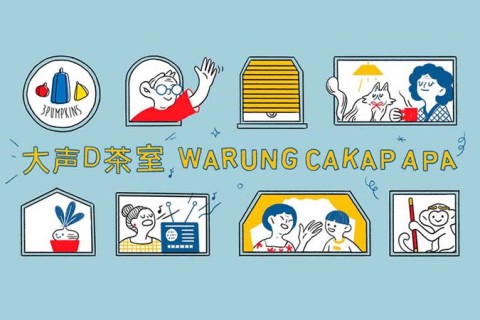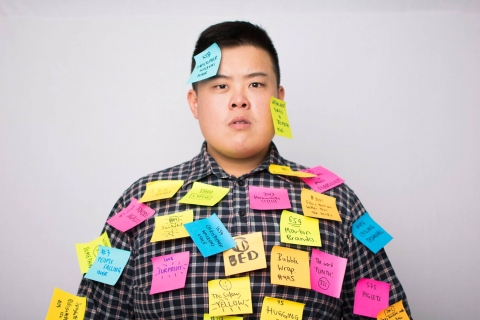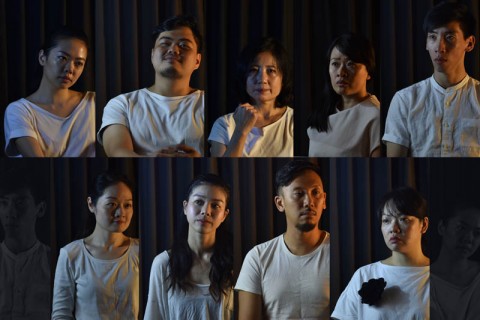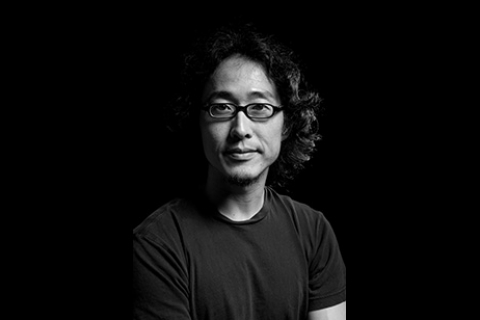As the Covid-19 pandemic began raging our city earlier this year, we have been challenged to reinvent the ways we interact with each other. The challenge escalated when the “circuit breaker” measures kicked in to officially limit physical interactions in our communities. 3Pumpkins saw the need for programmes in the vernacular to engage seniors, especially those who have been greatly affected by closures of senior activity centres, in forms and mediums that are accessible to them. In a short period of time, creative producer Lin Shiyun assembled a team of artists, who work predominantly in the theatre with live audience, to create 大声D茶室 / Warung Cakap Apa. This is a series of radio show-like programmes that range from radio plays, storytelling to talk shows in various Chinese dialects, Mandarin and Malay. The programmes are presented via MP3 players for seniors who lack access to technology as well as on YouTube and Facebook with captions and English translation for audiences who are interested in understanding the vernacular that they are not familiar with.
We spoke to the producer Lin Shiyun and some of the artists, Jalyn Han, Zelda Tatiana Ng and Li Xie, for their experience in creating these works, and their thoughts on how this pandemic changes the way they make art.

1. As an arts organisation, 3Pumpkins has been presenting works in many different art forms, including installation, puppetry, theatre, game/play and workshop/engagement. This new programme 大声D茶室 / Warung Cakap Apa is again a new foray into largely audio-based, radio show-like works. How did you do it? What are the challenges making the transition from one form to another?
Shiyun: 3Pumpkins’ primary mission is to find ways to connect people, especially through the transformation of how we perceive and use the public domain. The work started off by deconstructing the ways we use playgrounds, and from there it extends to the neighbourhood, commercial spaces… we take time to observe and understand the spaces and their inhabitants, then suggest ways to change habitual practices which are not conducive to social relationships. This is usually done collaboratively, by bringing different groups of people together so that the process enables deep change in how people relate to one another. To me, transforming human relationships and interactions forms the basis of socially engaged-art, or what we call community arts in Singapore. For the reason that community needs are not always the same and I can only work with artists who want to work with the people, 3Pumpkins’ works can turn out to be very "rojak" if you look at the outwardly form. But having said that, I find that it is the artist who is confident about their art who can do well in social practice, because you need the skills to facilitate and improvise with the public and transform aesthetics.

你的呼声 Leliofusion
Click here for full playlist ▶
Transiting to digital is not unlike any foray into new spaces or embracing a new art form. Each domain has its own rules, habits and inhabitants, so we need time to understand and "de-code" it in order to suggest something that has any social impact. The decision to go into "vernacular radio" is based on ground observation that seniors were actually isolated long before Covid-19 happened, and that nursing homes are severely understaffed. We want to create something that is familiar to them, and that is also easily accessible. A few domains are at play here: the internet, MP3 players provided to the seniors staying alone, broadcast in the wards of community hospitals and nursing homes. It’s a great challenge because I don’t understand these domains well and it’s difficult to get feedback. So everyday it’s a bit overwhelming for me in the head trying to understand what is happening on the ground while being quarantined at home. It’s a self-inflicted pressure to create some social change through every work we put out. So I’m trying to calm myself down and say “hey you spend at least one year in every neighbourhood to observe the ground, this is only one month and there are 3, 4, 5, 6, 7 grounds.”
2. As an artist or a creator, what went through your mind when the pandemic just started? How did you feel then? How do you feel now? What did you discover during this period or in the preparation process of 大声D茶室 / Warung Cakap Apa?
Jalyn: In the beginning, it started off as a service to translate the news in dialects for those who have difficulty understanding English and Mandarin. "Aunty Jalyn" is my online persona to deliver these messages in a positive manner, with hope that people would stay calm during turbulent times. At that time, I felt that we should do what we can, and be courageous to try things out.

卿阿姨叭卟时间 BaaBuu Time with Aunty Jalyn
Click here for full playlist ▶
Shiyun: She was staying up till 3am trying to figure out how to do Zoom and Facebook Live. Putting yourself out there in the public domain and being vulnerable to a very snarky online community is a very scary thing. But she did it anyway, because she was intrinsically motivated to reach out to the seniors and wanted others to be seen and have a voice in her programme.
Jalyn: I stumbled along the way and picked up some skills in editing and social media tools, but it’s not something that I can do professionally. At this point of time, I am reflecting on the improvisational "live" nature of my programme BaaBuu Time, if it is compatible with the rest of the well-edited and pre-recorded works. I also discover that perhaps my creative angle and speed differ from the younger generation. Nevertheless, I strongly believe that intergenerational projects teach us how to embrace different paces and I am amazed by the never-say-die spirit of our talented artists. I’m also glad that I could experiment with different forms of practice through this experience.

超级影迷俱乐部 Super Fan Club
Click here for full playlist ▶
3. In radio shows or podcast, although the presenters do not share the same physical space with the audience, I feel that there is still intimacy between them. The intimacy comes in a different form as compared to that of a live performance. What do you think? What factors do you consider when you perform for the recording of your show?
Zelda: Yes, it IS indeed a different kind of "consideration" to create intimacy. Instead of speaking to a large group of audience, like one in a theatre presentation, one has to imagine speaking to a person... like talking to a friend. Therefore content can be even more "intimate" i.e. sharing of one's views, recalling, "reminiscing" together.
Jalyn: I feel that the approach of virtual interaction is like a friend that speaks besides the ear of the receiver. Physical participation is different as it involves our immediate senses which generate temperature and emotion in a common physical space.

Burung Kakak Tua
Click here for full playlist ▶
4. Almost everything goes online during the “lockdown” period. Do you think we will go back to normal? Do you agree that live performance will eventually lose to the virtual ones?
Zelda: It's a time for change. No one knows what will be the outcome... It's a journey, an exploration. Theatre will NEVER be the same anymore and we shouldn't expect it to be. Within the so-called limitation of the "new format", how can we best make use of it and incorporate it into our creations? It's NOT about "win or lose"... It's about finding a NEW way of presentation. Before lockdown, the established companies will have enough funds to do bigger productions on stage... Now, it's a whole new skill going online... So in a way, we are "competing" in terms of creativity... not so much of funding and tangible resources anymore. In fact, anyone can make a podcast or vodcast at home... The question is content and how to make it interesting, and how fast one can adapt and create something new.
Li Xie: It’s a good time to re-evaluate. Was life really normal before Covid-19? Or did we simply accept, justify and normalise everything to suit? Participatory theatre is what I am always keen to do. To me, there isn’t a LIVE vs Virtual, THIS vs THAT.
Theatre exists everywhere, whether it’s digital or physical space. It is how we connect and explore interactions with the listeners/audience/communities, so it’s not always a provider and receiver relationship, but how we can ALL actively participate and create different art forms together anytime, anywhere.

成仔讲古之《西游记》 Journey to the West retold by Oliver Chong
Click here for full playlist ▶
5. How are you preparing for a post-pandemic world? What adjustments are you making to your ongoing process or upcoming works to prepare for presentation when the restrictions for gathering are loosened?
Jalyn: In my creativity process, I always ask myself if this (the art work) is what the receivers need or just what artists want. Digital arts is the new norm and I don’t reject it, but the content cannot be compromised and must be grounded and informed by life experiences. I do cherish my profession - live theatre - even more now.
Zelda: Incorporate the limitations into the work. See it as a challenge. It's like a test, a game, with various conditions... How is one going to conquer the circumstances and move on to the next level of the game...? It is important to work with various artists/designers/engineers from different industries and NOT just in the arts. The word "intercultural" has a new meaning and broader definition now.
Shiyun: I have to spend more time observing what a post-pandemic world really means for the people, and the various platforms that have opened up during this time so that there is a more critical understanding for us to propose further ideas. The last two months has been a mad rush responding and producing content, which I have so many people to thank for. I know that it’s ironic to say that I will take a break from mid-July and return to the non-digital sphere when the rest of the arts scene will probably be proliferating online. But my practice needs people to co-create and make meanings, so that’s where I will be going with these rich content that the artists have created in the last two months, offline to see the post-pandemic world on the ground to get real feedback and evaluate our work.
------
大声D茶室 / Warung Cakap Apa goes live on Facebook and YouTube every night at 9:00pm from Tuesday to Sunday, from now until 2 August.
All the programmes are also available on 3Pumpkins' YouTube Channel : https://www.youtube.com/c/3pumpkins
Follow 3Pumpkins on Facebook for updates on the programmes : https://www.facebook.com/three3pumpkins

 Every Brilliant Thing - Interview with Andrew Marko
Every Brilliant Thing - Interview with Andrew Marko
 Off stage interview with Emergency Shelter
Off stage interview with Emergency Shelter
 CONTACT 2013: The artistic director’s perspective
CONTACT 2013: The artistic director’s perspective